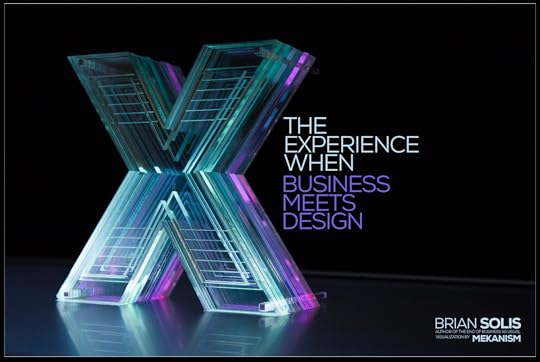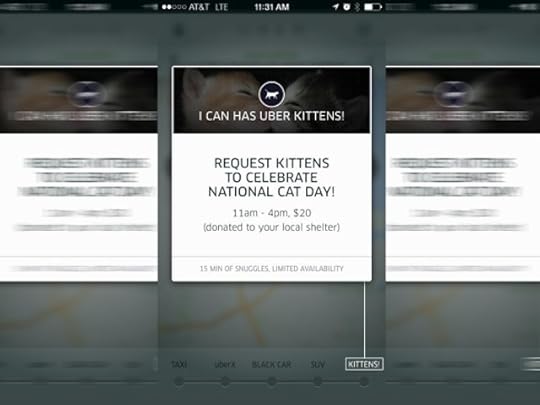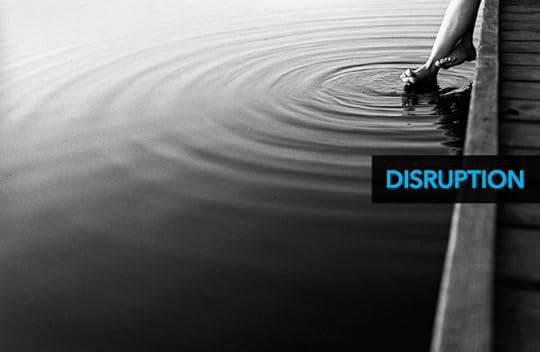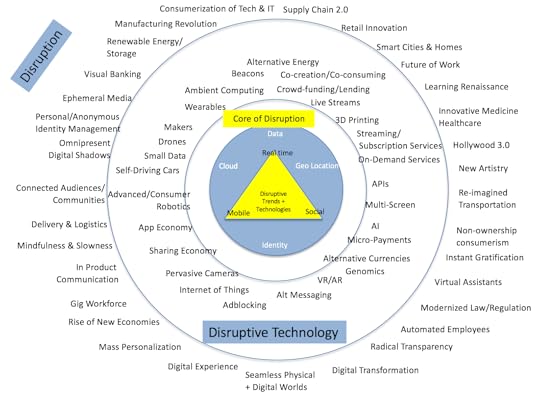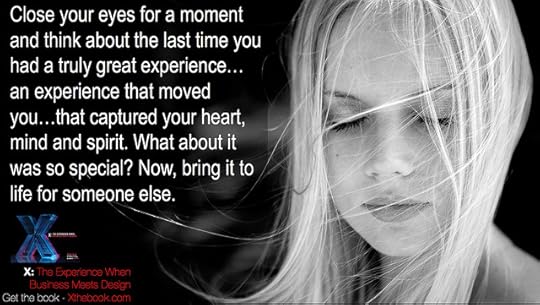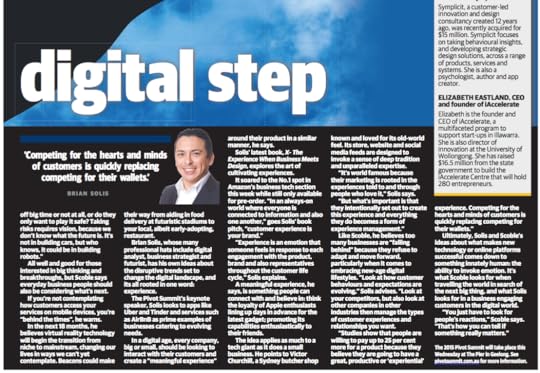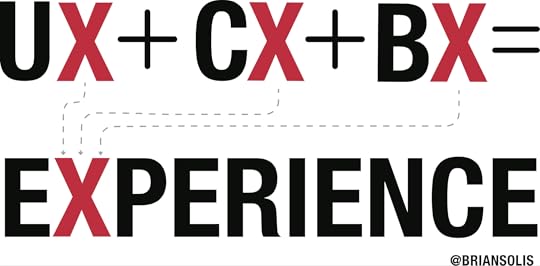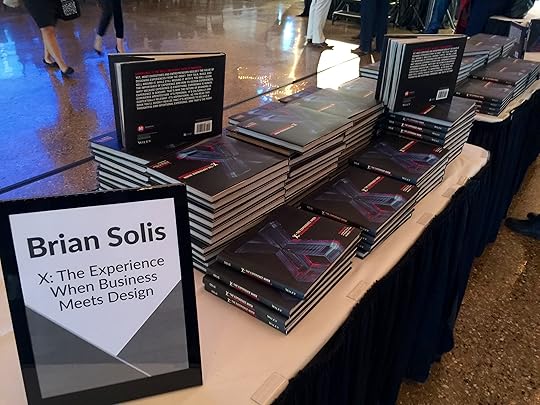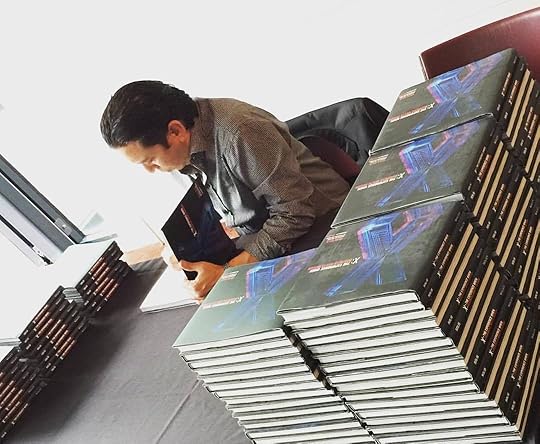Brian Solis's Blog, page 96
December 9, 2015
Here’s a Marketing Prediction That Serves More as a Clarion Call

Each year, my good friend Bryan Kramer assembles an incredible group of experts across several sectors to share their marketing predictions for the next year. The diversity of forecasts and observations is really worth exploring. I’ll share mine with you here…

Quite honestly, we’ll see more of the same patterns we’ve seen in previous predictions…new platforms, new ways to engage, new data sources and tools to improve accuracy, metrics, frequency and reach. My prediction is more of a clarion call for marketers to take a step back and learn more about the role marketing can play in shaping the customer experience in every moment of truth.
There’s marketing as we know it (broadcasting, a lot of talking, shiny object chasing, vanity metrics, etc.) and marketing as a form of engagement and community building (listening, learning, context, culture, targeting, collaboration, co-creation, etc). Brands don’t mean what they used to mean. They’re now experiential.
Customers need to be reminded why they should care about brands throughout the journey and the lifecycle. That means more specific content that answers questions and provides answers in the ways and networks they’re relevant and needed. That means understanding people, interest graphs and behaviors/preferences. That means conversations that yield mutually beneficial results. That means social engagement and overall efforts that improve the experience and the affinity in every relationship.
What are your thoughts for 2016?
Experience is everything…
Connect with me… Twitter | LinkedIn | Facebook | Youtube | Instagram | Pinterest

December 1, 2015
True Customer Centricity Requires the Merging of Marketing and IT
Guest post by Robert Tas (@TasRobert), SVP and CMO of Pegasystems.
You see the headlines everywhere – 2016 will be the year of customer experience; marketers need to make customer experience count; millennials demand an authentic customer experience. The bottom line is the stakes have never been higher in today’s modern, connected world. Every second of the business-to-customer interaction represents a key moment of opportunity and truth, each step carrying the potential to make or break that relationship, and ultimately your business. And, it all comes down to experience.
Recently, my company conducted a survey on customer service to better understand how well businesses in service-centric industries like banking and telco believe they serve their customers compared to what customers are actually experiencing. The survey revealed, among other things that 66 percent of companies think they deeply know their customers, but only 34 percent of consumers agree with them. Even worse, more than a quarter of customers feel that the companies they rely on do not know them at all. Clearly a significant gap exists.
However, most marketing departments aren’t equipped to bridge this gap by themselves. While the headlines may point to the short attention span of the millennial or the constant expansion of the tools within the digital era as the scapegoat for subpar customer experience, successful brands know that a positive experience only occurs when marketing and sales work closely with IT to drive strategy at a very high level.
New business models, created in the latest evolution in technology and fueled by huge quantities of data and delivery models, have complicated the method by which customers interact with businesses. One-size-fits all marketing fails to understand unique consumer behavior and is often rewarded with desertion. It is not always the easiest route, but the only way to drive digital transformation is to strive for a truly hybrid approach to marketing with full backing from the IT department.
The smartest companies, those that recognize that IT and marketing must evolve and take steps to do so, have had success transforming into customer centric organizations. Most importantly, these marketing professionals are relying on data and digital technology to drive customer engagement for fear of being left behind competition. Running parallel to these efforts must be the ability of IT to provide a single-view of the customer that connects the back office to the front. These efforts uncover meaningful data with the power to turn a first-time visitor into a long-time brand loyalist.
So, if you find yourself at the intersection of IT and marketing, with a declining amount of repeat customers and a depleted list of brand loyalists, pause and ask yourself these questions: Can I adapt quickly enough to changes in customer demand? Am I able to deliver a consistent, personalized experience to all of my customers across all platforms and channels that they exist on? Am I anticipating my customer’s present and future needs, and do I have this historical data analyzed? Are my colleagues in other departments even working from the same single version of the customer truth? If so, are we confident in our recommendations?
If you answered yes to all the above, congratulations – you have one happy customer base. If not, consider the benefits of creating a business strategy that merges IT and marketing priorities in favor of the customer:
Business users will be able to easily understand customer data and derive actionable insights
A single, accurate view of the customer will allow marketing to break free of siloed operation
Scalability and flexibility will position your company to change as quickly as your customers’ preferences
Complexity inherent to multichannel marketing can be reduced
Customers are routed to the right place, and quickly
Customer service agents can anticipate vs. react, saving time
Delivery models become easily customizable, allowing applications to run in the cloud or on-premises
Simply put, all the big data in the world can’t predict the role of the CMO of the future, but we know it will most certainly involve ubiquitous application of analytics, content strategy and digital expertise. Our customers are getting smarter and asking more from us, seeking the customer experience they’ve always deserved. We should be doing the same of our IT and marketing functions.
Photo Credit: ShutterStock Merging

November 29, 2015
Help! My Boss Is a Millennial (and I’m not)
Guest post by Liza Bennigson (#StartupMom), a non-millennial’s take on the millennial mindset
I’m not your typical start-up employee. I’m 37 with two young kids, and I still have an iPhone 5. My idea of a wild night is staying up till 11pm to watch The Voice.
My boss, the CEO and co-founder of our start-up, is 26. Constantly on the go, Jayne Ronayne can talk, type, text, walk and drink coffee at the same time. She is at some networking event or another most nights of the week, and wears Chuck Taylor high-tops to the office. She is, undeniably, a millennial.
It’s been said that millennials are narcissists. My first six months on the job, I was trying to keep Jayne’s pace and win the elusive “mom of the year award,” and it was taking its toll. At a particularly weak moment, I asked Jayne if I could work part-time. While I’m pretty sure she thinks “part-time” means working full-time with the kids at home, she is empathetic and flexible. That said, she expects her team to put the company’s needs at a very close second to our families’. This is less about narcissism as it is a fervent commitment to our success.
It’s been said that millennials are entitled. Jayne will contact anyone, anywhere, of any rank, and expect to get a response. But this is less out of a sense of entitlement as it is straight up tenacity. As a female founder, she knows she might have to work twice as hard to prove herself. She expects to do well in life, but only by earning it. It is this doggedness that has led her to be named one of Ireland’s Top 30 under 30 and our company to be chosen as one of the world’s top 25 startups in the Extreme Tech Challenge. Before meeting Jayne, I was content with contentedness. The millennial drive is contagious, and I’ll never again settle for mediocrity.
It’s been said that millennials are impulsive. This is a refreshing change from my previous life in academia, where a decision to change the status quo could easily take six months. Jayne moves quickly, but thoughtfully. While we try to make most decisions in front of a white board, we often resort to email or Slack or Skype. If you’re not “on call” and constantly connected, you might miss the opportunity to weigh in. We are all constantly connected, and we’re okay with that.
It’s been said that millennials are disloyal. Jayne makes decisions that are best for the company, not necessarily herself. Sometimes this means making changes, hiring or otherwise, that are hard to swallow. While I’m used to stability and predictability, Jayne is constantly evaluating whether team members and processes are the right fit at the right time and, if not, is comfortable letting go. She considers it in no one’s best interest to draw out an inevitable mismatch.
It’s been said that millennials are cheap. Sure, I was frustrated when it took me almost a year to get my own laptop and I have to pay my own health insurance, but last time I checked, a slow burn rate was a good thing. Let’s call it frugal.
Next year, more than 3.6 million baby boomers are set to retire and more than one-fourth of millennial workers will become managers. The characteristics commonly used to depict this up-and-coming generation might be less misconceptions than misinterpretations. If positioned correctly, these traits can translate into incredibly adept, impassioned and courageous leaders from whom we all––millennials or not––have a lot to learn.
About the author: Liza Bennigson is the Director of Business Development at KonnectAgain, an emerging alumni engagement software for corporations and universities. She enjoys writing, running, travel and dance parties with her kids.

November 17, 2015
What Makes a Truly Great Experience?
I’ve been working with IBM over the past several years on everything from the future of work to cognitive computing to social business to smarter commerce. Most recently, IBM and I have partnered on something a bit more experiential. The Commerce, Mobile and Social team at IBM selected X: The Experience When Business Meets Design as the company’s latest title for its monthly book club.
As part of the club, IBM hosts a series of activities for employees and the general public. There’s one segment in particular that I wanted to share with you. In what IBM refers to as a “close up,” the team and I discuss a number of topics that explore personal and professional inspiration. The conversation was ultimately re-imagined as a very cool infographic. The discussion yielded far more content than they could use use in one image. So, I’ve included the entire conversation below along with the original infographic.
I hope it helps…
In your own words, close your eyes and think about the last time you truly had a great experience with a company as a customer – what company was it and why?
Eyes closed. Memories activated. Ah.
The last truly great experience was when I visited Disney World in Orlando. I was presented with a MagicBand with a personalized box adorned with characters from the Invincibles. I opened the box carefully as if I were unwrapping a Christmas present, slowly, savoring every moment. Everything about the arrangement, presentation, it was all reminiscent of Apple.
Very thoughtful and very intentional.
But it didn’t stop there. I downloaded the app. Connected my account. And suddenly my MagicBand was my “magic” wallet, hotel room key, park admission, FastTrack pass, et al. The idea of a completely integrated and value-add experience that continues before, during and after park tickets is beautiful.
As I put the box down, I glanced across the room and saw a bath towel shaped so cleverly as a silhouette of Mickey Mouse and I thought, “perfect.”

The Disney MagicBand Box Opening
On the same topic, what’s your earliest memory of a great customer experience?
I’m not going to lie. When I search my memory for the answer, I sort through so many years of bad experiences, it’s difficult to find what I’m looking for. Honestly, I remember for my first enchantment, which is easily Disneyland. Interesting considering question #1. Of course Disneyland is part of Disney’s experience ecosystem and it comes as no surprise.
I just remember everything from the sign, “The Happiest Place on Earth” to the fun tram that moved people from the parking lot to the entryway to the friendly characters who went out of their way to make every kid feel special. Of course the rides were incredible, but I really remember it being the first time I truly felt special outside of my family. I never forgot it and I’ve since returned at least 100 times.

The new Disneyland Tomorrowland
For a book that took years to write, was there a singular moment that you enjoyed most during its construction?
The book was very difficult to write and produce. Everything about it was meant to be experiential and innovative. The amount of research that went into creating an analog app was as difficult as it was revealing. Developing original frameworks, imagery and content based on all of the inspiring stories from the brands and people featured in the book was also moving.
But the one thing that stands out was the moment I reached out to former Pixar artist Nicholas Sung to help me with storyboard work. I was introduced to his work through the “Snow White” project at AirBnB. He helped shape that chapter significantly and then we had the idea to storyboard the journey of the person reading X. It was brilliant. It brought the book back into the fun and amazing zone and reminded me of why I ventured down this path years ago.

A panel from “The Story of X” created by Nick Sung
As an expert in disruptive technology, were you constantly getting in trouble in school or were you always on your best behavior?
One word…yes. I thought I was a problem child. I was constantly asking “why” when it came to process and existing standards. I was always labeled as a trouble maker and it was demeaning and debilitating for many years of my early life. I was (and still am) a day dreamer. I tried to conform and for the most part I did. But I also felt that in the process, I lost my way. I recently read a study that said something along the lines that if your child talks back, it’s a sign of future success. I’m not saying I agree with it nor am I saying that I’m successful, but I can say that I’m much happier finding new and better ways to do things while also finding ways to unlock new possibilities.
In the spirit of futurism, what’s the next book we can expect from you?
Wouldn’t you I like to know.
For years while writing X, I also studied innovation, culture, startups and also enterprise innovation centers. I’ve written many reports and articles and even created several infographics on the subject. That just may be my next big things…how to build a culture of innovation to survive digital Darwinism.
Experience is everything…
Connect with me… Twitter | LinkedIn | Facebook | Youtube | Instagram | Pinterest

November 16, 2015
Uber is Driving a New Generation of Collaborative Marketing
A few weeks ago, I had a very interesting conversation with Fortune’s Sarah Silbert, one that’s still resonating with me. Silbert was exploring Uber’s marketing partnerships and how they might be different than what we see from Lyft and others. Her hunch was that Uber not only amplifies “the on-demand economy—it’s also setting the pace for a new generation of brand marketing.” The story was prompted by Uber’s many partnerships with brands, specifically the promotion to launch the new BMW 7 Series. But that’s just one of many examples. Whether it’s AMEX or Uber for Kittens/Puppies, the company is exploring with many marketing models that I’m sure generate revenue in new and interesting ways.
Her article ran a bit ago but I wanted to share with you our entire conversation here. Perhaps it will not only change how you see Uber but also inspire new marketing opportunities in your work.
Is it accurate to say that Uber is an effective marketing tool for brands that run promos with the service?
Uber is a platform for many things, changing of the guard in addition to testing and promoting new products and services. It’s not unlike how taxis carry advertising on and in its vehicles. But since Uber is a software based platform that combines real-time, mobile and social, it’s a catalyst for a new model for collaboration. Now whether it’s effective because its promotions work or simply because they’re press worthy is yet to be seen.
When Uber runs promotions (with companies such as BMW, Starwood, credit cards, etc.), do you think Uber or the other company benefits more and why?
For the time being, there’s a sense of novelty to all of this that all parities enjoy because of the press generated around every partnership. It’s all very clever though and demonstrates how new platforms open new doors to creative possibilities. As an analyst, and also a Starwood member and AMEX holder, these partnerships, like any loyalty-based program, do help me justify additional use of Uber. More so, the challenge that Uber has is that i has to reach the masses. At the same time, the challenge traditional brands and service face is that they need to reach new connected customers. At the moment, these alliances bring two disparate worlds together.
How much money could Uber be making from these sorts of partnerships?
Honestly, I do not know. Judging by how much money I see brands spending on Youtube or Twitter or other new platforms, I can only imagine that it’s not inexpensive.
Experience is everything…
Connect with me… Twitter | LinkedIn | Facebook | Youtube | Instagram | Pinterest

November 8, 2015
The Insider’s Guide to Digital Transformation and the Path to Innovation
For those who do not know, Altimeter Group was acquired by Prophet, a brand strategy consultancy, in July 2015. The partnership doesn’t change Altimeter’s agenda. In fact, our research will only expand and scale.
Recently Prophet hosted an event to discuss trends in customer experience and digital transformation. It was held in Minneapolis with some of the top local companies in attendance. Co-presenting with me was , Director of Experience Design and Product Innovation UnitedHealth Group, and author of Getting To Thank You: A Practitioner’s Guide to Innovation. Prophet Chief Digital Officer Chan Suh served as moderator.
Somewhere during the conversation, I had to balance speaking with note-taking. The conversation was just that good. It was rich with questions and also experiences, stories of progress and obstructions. There were a few recurring themes that surfaced that are highlighted below.
Digital transformation continues to be a priority among companies. And while many are making strides on specific fronts there are still clear hurdles, including: consensus-building, prioritization, cross-functional collaboration, and lack of expertise. But, it’s clear, progress is inevitable. Innovation in CX is driven by it.
Companies that are able to focus their efforts, even if only minimally, tend to concentrate on the following areas:
1. Know the customer and understand the differences between their trajectory and current beliefs, and their assumptions and investments in the customer journey.
2. The next step is to then reimagine the customer journey based on preferences, expectations and behaviors of the new generation of connected customers.
3. And finally, find the moments that matter. A catalyst for experimentation is to find the “Undercover Boss” moment. Yes, it’s a TV show and the ending is always the same – that moment when an executive discovers empathy. They feel firsthand the challenges that employees and customers face, which leads to greater insights and an improved customer (and employee) experience.
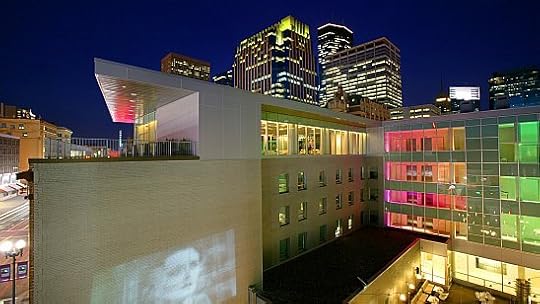
Innovation Takes Innovation
A key trend that is accelerating business transformation is a formal investment in innovation. It can be as simple as an inspirational tour of Silicon Valley beacons such as Facebook, Google or Tesla. More ambitious companies form innovation teams or fund independent innovation centers to focus on key areas of weakness and opportunity.
At UnitedHealth Group for example, Chris Finlay is part of an innovation team that focuses on Human Centered Design (HCD). Finlay believes that it’s this work where he can see the rubber meet the road because HCD is rooted in putting people first.
He says the key is to experiment, collaborate and find better questions to ask that will lead to different outcomes.
From Re-mixing to Re-CXing
In one point during the conversation, Chan asked the audience what they think of when they hear the words “customer experience.” Their responses show how wide-reaching this concept is:
Fragmented journey
Out-of-date touchpoints
Understanding how customers feel
Knowing what customers want
Pain points
Seeing the world through the customer’s eyes
Engaging
Holistic
Consistent
How do customers feel about your brand?
Quite a bit of our conversation explored the non-linear nature of the customer journey. It’s different now than it was even three years ago. It’s vertical, horizontal and cuts across silos. Lines are blurring more than ever between brand and digital, brand and customer experience, and brand and digital.
However, there are two important questions that we zeroed in on:
1. Where are the places where brand meets digital?
2. Where are the places where brand meets experience?
To further make the case for re-cxing, I shared my recent work with Google around mobile-centered micro-moments and how they now play out.
The group agreed that they need to make the shift from focusing on segments that bucket people by age, income, education or promotions to identifying and investing in the moments that matter to different types of consumers. We need to shift our perspective to “moments” vs. persona-based journey maps.
For example, micro-moments begin with intent:
I want to do….
I want to know…
I want to go…
Then we can take an empathetic approach to identifying friction and opportunities in throughout the experience.
When I begin my journey, my first, second and next steps are…
The content, websites and shared experiences that matter in each moment are 1, 2, 3…
The current experience with our company is 1, 2, 3…
When customers visit our site, the following happens (or doesn’t happen)…
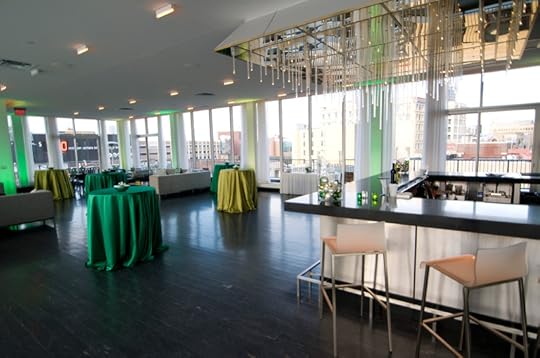
Agents of Change
To bring about new investments requires new perspective. Many of those in attendance shared stories about the importance of calling attention to new possibilities and areas of urgency. I call these types of people change agents. Someone has to push and rally “belief” among stakeholders. And change agents are constantly asking themselves, “How can we disrupt the market?”
We examined two scenarios where incumbents opened the door to disruption by following the path of business as usual, rather than investing in their own disruption.
1. Honeywell vs. Nest: Innovation in the thermostat industry was long overdue. Nest not only re-imagined the capabilities of a smart thermostat, but Google acquired it because it actually reconsidered the role of a thermostat in a home. Nest designed their products to be the smart hub of a connected home, which is becoming increasingly important as the Internet of things becomes more pervasive.
2. Blockbuster and Netflix: The famous story of Netflix’s founder Reed Hastings getting charged a $40 late fee when he returned Apollo 13 changed the course of Blockbuster’s fate. Can you imagine? The clerk assessing that charge in that moment had no idea he or she was contributing to the demise of their employer and an entire industry. Blockbuster chose not to invest in Netflix, though Hastings presented the idea to the board, and thus missed the opportunity to develop the new landscape for on-demand media.
Disrupt or be Disrupted
For every company, there is a disruption event on the horizon. The scary question isn’t if, it’s when will this event will unfold (if it hasn’t already)?
Innovation begins by first identifying friction point,, then evaluating the value, opportunity and risk tied to making changes to those points, and finally creating a roadmap to get there. Where your company is on the bell curve, should determine how disruptive you need to be.
Innovative companies share the following traits. They:
Evaluate things faster
Examine vertical models that can have a horizontal impact
Make decisions faster
Test and learn
Iterate
Reward experiments and also failure
ACT
Of course, it’s important to examine who is delivering on customer experience well. The group was very active during this part of the discussion. What everyone agreed on is that it’s not always safe or beneficial to look to your immediate left or right. Some of the most progressive companies are outside of your industry. For example, Starbucks doesn’t view itself as a coffee house; they are a consumer tech company. That lens drives very different business decisions and outcomes.
Other companies that were admired by attendees include:
Sephora – Opened an innovation center to better understand the digital customer and the new relationship between physical and digital shopping.
Capital One – With their acquisition of AdaptivePath, they are redesigning what a bank can be.
Walmart – Opened an innovation center to focus on e-commerce excellence.
IBM – Investing in continued reinvention with a new emphasis on Watson as a platform.
Xiaomi – Customer-led innovation in technology and business models.
Before concluding, Chris Finlay and I shared our views on how each change agent could leave that session to accelerate meaningful transformation:
1. Innovate to create new value.
2. Find the long-term view to blueprint transformation but find short-term opportunities to win in micro-moments.
3. You can’t solve everything right now. Prioritize needs and work.
4. Don’t put unnecessary pressure on yourself.
5. Know where when to have the tension among team member priorities and investments.
6. Work to align beliefs. Establishing a shared purpose removes friction in transformation.
7. Think like the customer and act like a startup.
Experience is everything…
Connect with me… Twitter | LinkedIn | Facebook | Youtube | Instagram | Pinterest

November 6, 2015
Disruptive Technology is Disrupting Behavior
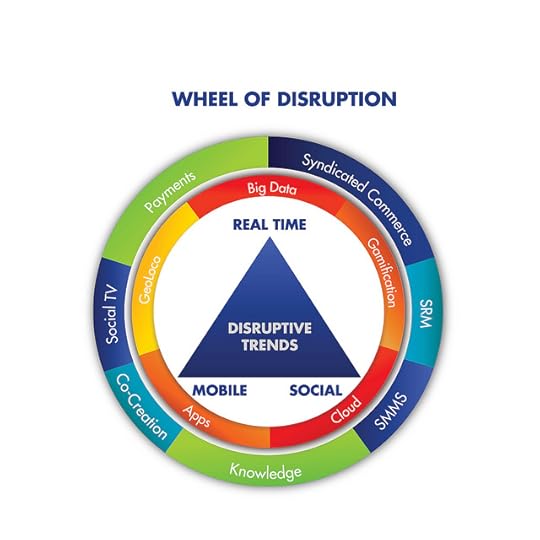
I study disruptive technology, specifically innovative technology that gains so much momentum that it disrupts markets and ultimately businesses. In the past several years, disruptive technology has become so pervasive that I’ve had to further focus my work on studying only disruptive technologies that are impacting customer and employee behavior, expectations and values and affecting customer and employee experiences. I can hardly keep up with today let alone consider the potential disruption that looms ahead in every sector imaginable including new areas that will emerge and displace laggard perspectives, models and processes.
The image above represents the focal point of my work in 2009 – 2012. I called it the “Wheel of Disruption” (WoD) and it was meant to document and convey that the “Golden Triangle” of real-time, mobile and social, surrounded by the cloud, was inspiring incredible innovation and thus producing new and disruptive new apps, tools and services.
It was quickly dated to say the least.
Jump ahead to 2013, and you can see just how quickly disruptive technologies were rising and shifting while affecting or creating new markets, i.e. the so-called sharing economy, which I refer to as the selfish economy, and also the maker movement, connected homes, alternative currencies, ephemeral communication, unbanking and crowd-funding, etc.
This version too was quickly dated.
Let’s take a trip back to the future and visit 2015. What you see below is a working, and crude, model of the the Wheel of Disruption and as you can see, it’s radically enhanced and far more complicated. This is because the rate of which disruptive technology is, well disrupting, is exponential. So the ability to keep up with the next big thing is shaping and reshaping my view of the horizon regardless of how many years you want to look out. But if you notice the differences between this rough model and its predecessors, you’ll notice I’m now focusing on technology’s affect on behavior and the resulting affect on society and how that influences markets.
Disruptive technology’s impact on the short-term is fast and exceptional. Look then at how innovation shapes disruption and the causal effect of disruption on how people go through life, whether personal or for business (even though it’s blurring), you slow evolution to the point where you can track its trajectory.
And, this brings me to the present. As a so-called futurist, I’m now reprogramming my crystal ball to still explore disruptive technology but more so humanity. The Wheel of Disruption was cool and initially effective in tracking technologies that helped prioritize investments toward strategic iteration and innovation. But it was by observing people and the who, what, where, why, when plus to what extent and how shifts in behaviors, expectations, values et al., are bringing to life the old adage of “the future isn’t what it used to be.”
What does that mean? Take a look at the outer layer of the work in progress WoD and you’ll notice that the outer layer is comprised of effects not trends. That’s the layer emulates the ripples of disruption. With each new disruptive technology that acts as a pebble in the water, the ripples that cast forward change the nature of the water’s surface and direction. Here’s the thing; disruptive technology is never going to let up and thus, these pebbles will continue to hit not in just one place, but all over, causing short and long-term transformation on the surface and below.
This metaphor only means this…the future is the result of technology’s impact on society and everything else is upset, rejuvenated or roused as result. Oh the humanities of it all. The future 5 or 10 years out is a selfish one, governed by accidental narcissists who were conditioned to know that the world literally revolved around them and they, whether they wanted it or not, now had the power to…
Put themselves out of work or relevance because of technology.
Gain new expertise that makes them matter to the next economy.
Inspire a new generation of people to change and work toward a common purpose.
Etc. etc.
It’s almost infinite. No, it is.
In a world of “disruptive” apps, devices and machines, humanity becomes the killer app.
Part of the Think Further series brought to you by Fred Alger Management. For more “Think Further” content, please visit www.thinkfurtheralger.com
Experience is everything…

November 4, 2015
Sometimes The Best Experiences Were Meant To Be That Way
Close your eyes for a moment and think about the last time you had a truly great experience… an experience that moved you…that captured your heart, mind and spirit. What about it was so special? Now, bring it to life for someone else…and they’ll do the same.
Experience is everything…
Connect with me… Twitter | LinkedIn | Facebook | Youtube | Instagram | Pinterest

October 27, 2015
Tracking Our Next Digital Steps
It’s been a bit of a whirlwind since the launch of X. In the last two weeks, I’ve hosted conversations about the promise of experience design in London, Düsseldorf, Oslo, Sydney and Geelong.
Somewhere along the Atlantic, I was asked to answer a few questions ahead of my arrival in Geelong for the Pivot Summit by Courtney Crane of the Geelong Advertiser. Thanks to the magic (or curse) of inflight wifi, I was able to make her deadline. But it was more than a Q&A, it was the purpose of the conversation that stopped time to reflect on how this once bustling city is proactively investigating how to build upon its history to adapt for the future.
Geelong is a port city located on Corio Bay and the Barwon River, in the state of Victoria, Australia, about an hour outside of Melbourne. The city is losing its Ford manufacturing and Alcoa aluminum plants and it has many city officials and citizens banding together to explore ways to transform the city from the likes of a Detroit to that of an Austin. Tech is of course at the heart of that conversation.
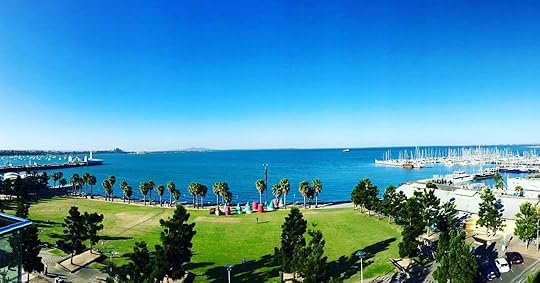
Geelong: a view from my room at the Novatel. The event is hosted at the end of the pier
I hope this conversation helps Geelong. And, I also hope that it helps you…
First of all, could you define what you see as a “meaningful experience.”
Experience is an emotion that someone feels in response to each engagement with the product, brand and also representatives throughout the customer lifecycle. A meaningful experience is something intentionally designed with reliability, believability and other attributes that align with someone’s intentions and/or expectations.
A meaningful experience is not functionality, capability, brand, customer service or the result of simply transacting with customers.
Is “cultivating an experience” different from brand management?
Brand management and marketing are often associated with the term experience. At the same time, customer support and service is also tied to experiences. But more so, the way that brand, marketing, and support strategists think about experience is often mechanical or procedural. The entire idea of cultivating an experience is understated or under appreciated.
Brand management is tied to brand strategy. And brand strategy is often a byproduct of brand architecture and promise. In the book, I talk about the reality of the “experience divide” which is a simply test in comparing the brand promise to the experience people have and share. To that regard, brand management surely comes into play as the company needs to, and often doesn’t, close the gap because they prioritize pushing the brand story rather than bringing it to life.
X = experience.
It’s the confluence of BX + UX + CX. To bring desired, meaningful experiences to life requires that we don’t start with brand architecture, we instead start with experience architecture. Then brand management has a higher purpose to serve the bigger mission. Experience is the brand. And the experiences people have becomes part of marketing.
Many of our readers own or manage small local businesses- your average cafes, plumbers, retail stores, etc. How important is it for these “average joes” to understand the digital landscape and be able to cultivate meaningful experiences?
Experience is everything. Small business is the heart of any economy. But too many are falling behind in the world as it evolves simply because they are intent to hold onto the way things have always been. Technology is one of the key pillars to delivering and managing meaningful experiences because customers are increasingly living digital lifestyles. They don’t go backward. Their behaviors and expectations only continue to evolve. It’s up to the “average Joes” to adapt or not.

I think about Victor Churchill and the incredible experience they’ve created around the idea of a traditional butcher shop. It’s world famous because their marketing is rooted in the experiences told to and through people who love it. I personally had to visit it and was completely enchanted by the experience. But what’s important is that they intentionally set out to create this experience and everything they do becomes a form of experience management.
Are those who think simply having a good product and good customer service is enough to be successful kidding themselves?
We live in a world where having a good product and/or good customer service is a competitive advantage. And it’s true for the time being. But when you study where consumerism is shifting and ultimately where it will be in the short while, the desire for all around experience, before, during and after buying, is the new “good enough.”
Studies show that people are willing to pay up to 25% more for a product because they believe they are going to have a great, productive or “experiential” experience. Competing for the hearts and minds of customers is quickly replacing competing for their wallets.
Can a mediocre product or business thrive by creating an exceptional experience around it?
I’m sure that dazzling customers this way has and will work somewhat until they recognize that they’re not able to do what it is they set out to do the way the intended to do so. Mediocrity kills. Competing for it is a short-term game. An exceptional experience means that you understand customer friction, aspirations, frustrations, vision to drive your innovation and overall experience architecture.
Technology and the online world is evolving so quickly. What key advice do you have for businesses looking to adapt and make smart decisions?
Technology is an enabler for a bigger vision. It is not the solution. Too many businesses look at technology as a way of scaling the ideas, processes, and metrics of customer engagement models of yesteryear. Start by studying the experience gap. Look at how customer behaviors and expectations are evolving. Look at your competitors, but also look at other companies in other industries the manage the types of customer experiences and relationships you want. Following the path of business as usual and using new technology to achieve it, does not change your core.
Iteration improves things.
Innovation opens new doors and creates new value.
Disruption shifts behaviors and markets.
Every business must do at least two of the above.
Are there any key trends in the digital world you believe Australian businesses should be aware of right now?
One of the reasons I believe UX is so important in the formula of experience architecture is inspired by the consumerization of technology. Without going through every trend that Australian businesses should watch, we should focus on immediate expectations. Apps like Uber, Tinder, Clear, et al., are changing how people navigate apps to accomplish goals or trigger outcomes. How they interact with these apps is one part. Add to that new services such as AirBnB and you start to see that people want services that cater to their evolving needs.
The biggest thing to realize here is that digital is changing how people make decisions and how they want to do business. They expect to engage EVERY company the way they do with their personal apps. This means that the entire funnel, the entire customer journey, each and every touch point from the Web, to sales and service teams to physical stores to CRM must be re-imagined to feel more natural to the way digital trends are impacting people.
Experience is everything…
Connect with me… Twitter | LinkedIn | Facebook | Youtube | Instagram | Pinterest

October 22, 2015
Xcited to Announce That X: The Experience When Business Meets Design is Now Available
Three-and-a-half years in the making, I’m proud and also relieved to finally announce that X is now available online and in a store near you. I can’t tell you how important this is to me. There were several times along the way including up until the end when I thought this book would never see the light of day. I can’t wait to share it with you.
I tend to spend most of my time sharing my work across the web and at conferences everywhere. If you can, I ask for your support with this book. The first week is very important to authors. Please pick your favorite retailer/etailer and give it a read. Help me spread the word! And please, go for the print book. The story of the book is a real life case study of the book’s purpose.
Seriously. Thank you for all of your support now and over the years.
Amazon | BAM | Barnes and Noble | 800CEOREAD
What is X?
X represents experience. It’s that je ne sais quoi that makes something so special. This book is about X, creating such memorable moments for your customers through every encounter they have with you brand—all day, every day.
While everyone is talking about experience, and have been for years, few have shared what an experience really is, why it’s important at every level, and more so, how do design meaningful and shareable experiences.
X is meant to be an experience in of itself. Its unique approach explores why great products, creative marketing and delightful customer service are no longer enough to succeed. Cleverly designed as an “analog app,” the book introduces the role of “experience architects” to guide readers through the art and science of designing experiences.
Xclusive Facts about X
This is my fourth book with Wiley.
X is the first of the four to feature a cover without a chain (we’re finally breaking free from the shackles of legacy and mediocrity).
I’ve worked on this book every weekend and many weeknights for the last few years.
I took a break from X to publish WTF (What’s the Future of Business). WTF was never on the roadmap and was introduced by Wiley as an ebook originally to serve as a bridge between End of Business as Usual and X. What a wonderful detour!
The original manuscript was tallied at 150,000 words and later revised down to ~40k.There was talk about releasing an uncut version. Instead, I’ll release all of the unpublished chapters as PDFs eventually at Xthebook.com.
The book was designed in partnership with Mekanism, which is a big deal for an award-winning advertising agency to help on a project like this. We go back years and I’m thankful for their friendship.
The shape of the book is modeled after an iPad Air 2.
There is no table of contents in the book. It is instead designed to emulate the apps many of us use on our smartphones and tablets.
The chapter format is also patterned after software releases, trying themes together rather than traditional numeric progression.
The book features original artwork and frameworks to introduce visual storytelling into the experience. The complex process of ideation and development delayed the book several times.
The cover was originally designed in 2013 and redesigned in 2014. The new cover was was published on Amazon and remained there until a few months prior to official launch when we decided to go back to the original design. This is the alternate cover…
The “X” on the cover is not a product of Photoshop, it’s physically cut and built multi-layer stack of Plexiglas with each layer featuring a different texture.
To photograph what would be the cover, the X was placed on a flat screen TV set on its back shooting colors through the layers in a dark room.
During the shoot, we also captured video to showcase the brilliant spectrum of colors, which would become a teaser video to sell the publisher on the concept of the cover design. The video was shot in 2013 and not shared publicly until 2015.
When I first saw the X model live, I expected to see something that stood several feet tall. Instead, I was surprised to learn that it stands at only 5 inches. It looked so big on TV!
The framework for experience architecture introduced in the book was designed to form the letter “X.”
When the book initially went to press, the amount of color saturation on each page initially jammed the process. Everything was re-calibrated to work but not without slightly delaying the release.
Connect with me… Twitter | LinkedIn | Facebook | Youtube | Instagram | Pinterest


